Shea butter, derived from the nuts of the shea tree, has been a cornerstone in the beauty regimens of many cultures for centuries. Known for its rich, emollient properties, it offers a plethora of benefits for the skin and hair. This article delves deep into what shea butter is, its effectiveness, benefits, potential side effects, usage tips, and the top trendy products that incorporate this versatile ingredient.
Table of Contents:
– What is shea butter?
– Does shea butter work?
– Benefits of shea butter
– Side effects of shea butter
– How to use shea butter
– Top trendy products that contain shea butter
What is shea butter?
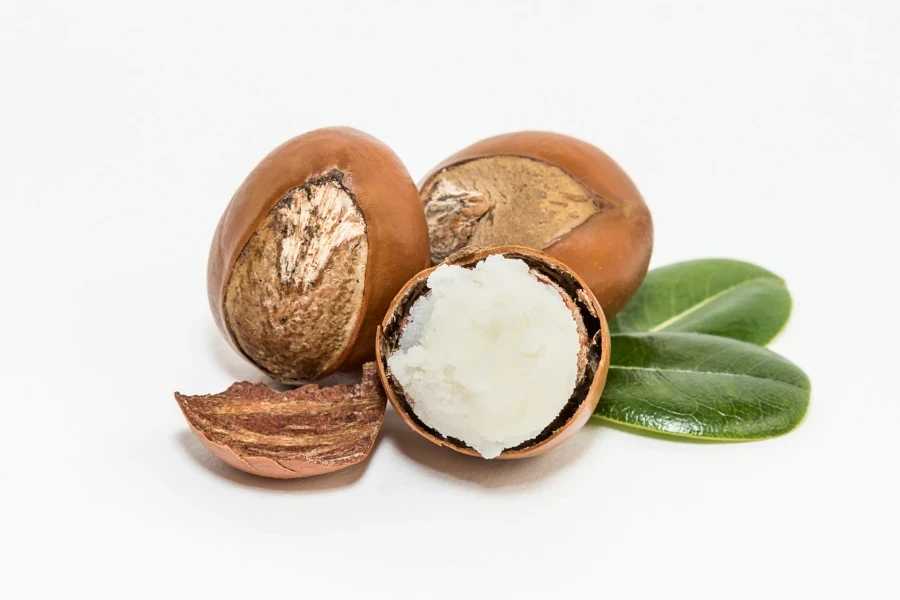
Shea butter is a fat extracted from the nuts of the shea tree (Vitellaria paradoxa), primarily found in the savannah belt of West Africa. Its composition includes rich amounts of unsaponifiables (components that do not turn into soap when in contact with alkali), vitamins A, E, and F, and essential fatty acids, making it a superior moisturizer and skin protector. Traditionally, shea butter has been used in Africa not only for skin and hair care but also in cooking and medicinal applications.
The process of extracting shea butter is meticulous and often done by hand, involving the collection, cracking, roasting, and grinding of the shea nuts into a paste. This paste is then whipped or kneaded to separate the oils, which are then boiled and skimmed to produce the final product. The unrefined shea butter thus obtained is rich, creamy, and retains most of its natural vitamins and minerals due to minimal processing.
There are two main types of shea butter available on the market: unrefined (raw) and refined. Unrefined shea butter is processed without the use of chemicals or preservatives, maintaining its natural color, nutty aroma, and nutritional value. Refined shea butter, on the other hand, is processed to remove its natural scent and color, resulting in a white, odorless product that may lack some natural properties but is often preferred for cosmetic formulations where scent and color uniformity are desired.
Does shea butter work?
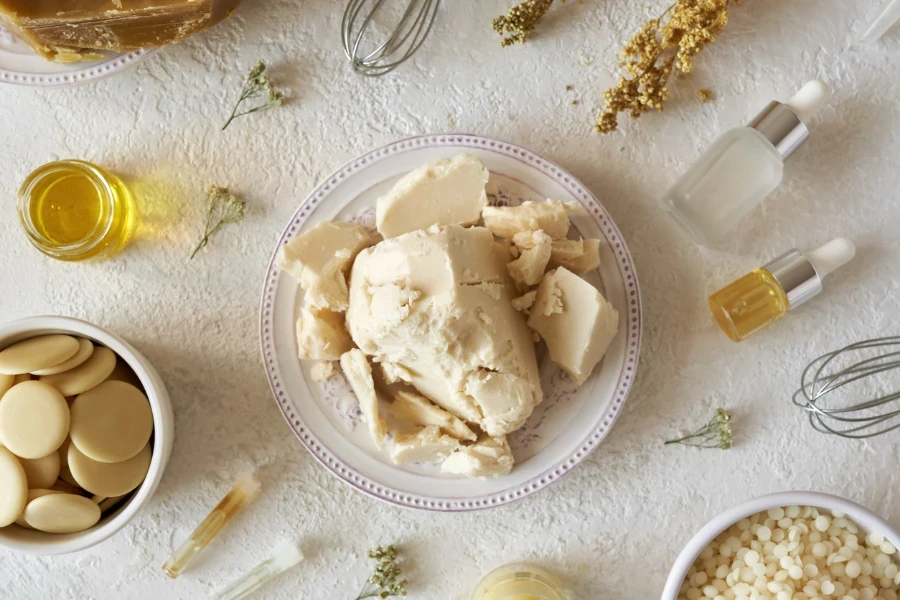
The effectiveness of shea butter as a moisturizing and healing agent has been validated by numerous scientific studies and centuries of anecdotal evidence. Its high concentration of vitamins and fatty acids makes it incredibly nourishing for the skin, helping to protect the skin’s natural oils. Shea butter’s unique composition allows it to penetrate deeply into the skin, providing long-lasting moisture without clogging pores.
Research has shown that shea butter can help improve skin conditions such as eczema, dermatitis, and psoriasis by reducing inflammation and promoting healthy skin growth. Its anti-inflammatory properties, attributed to natural compounds like lupeol cinnamate, make it beneficial for reducing redness and swelling on the skin. Additionally, the antioxidants found in shea butter, such as vitamin E, help protect the skin from environmental damage and premature aging.
Moreover, shea butter’s ability to stimulate collagen production contributes to its anti-aging benefits, helping to reduce the appearance of fine lines and wrinkles and promoting a more youthful, radiant complexion. Its versatility makes it an effective ingredient not only in moisturizers but also in lip balms, hair conditioners, and even sunscreens, providing a wide range of applications for improving skin and hair health.
Benefits of shea butter
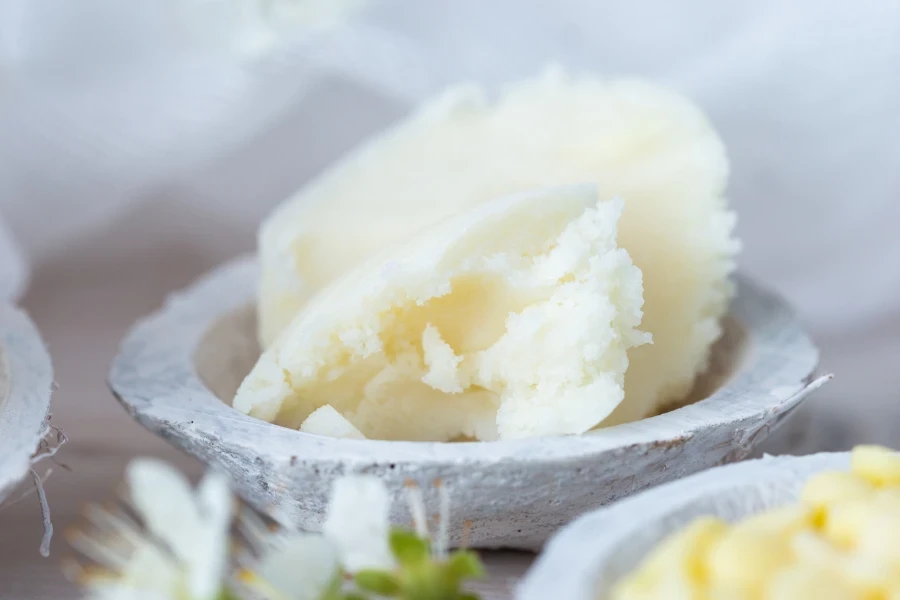
Shea butter offers an array of benefits for the skin and hair, making it a coveted ingredient in the beauty and personal care industry. Its moisturizing properties are unparalleled, providing deep hydration to dry, cracked skin without leaving a greasy residue. This makes it an ideal choice for all skin types, including oily and acne-prone skin, as it helps balance oil production and does not clog pores.
For the hair, shea butter can be a game-changer, offering intense nourishment to dry, brittle strands and soothing irritated scalp conditions. Its natural protective qualities shield the hair from heat damage and environmental stressors, while its emollient nature helps improve hair texture, elasticity, and shine. Additionally, shea butter can be used to soothe and condition the scalp, promoting healthy hair growth and reducing issues like dandruff and scalp inflammation.
The anti-inflammatory and healing properties of shea butter also make it an effective treatment for various skin conditions. It can help soothe sunburn, reduce the appearance of scars and stretch marks, and even provide relief from insect bites and rashes. Its natural UV protection, although not sufficient to replace sunscreen, offers an additional layer of defense against harmful sun rays.
Side effects of shea butter
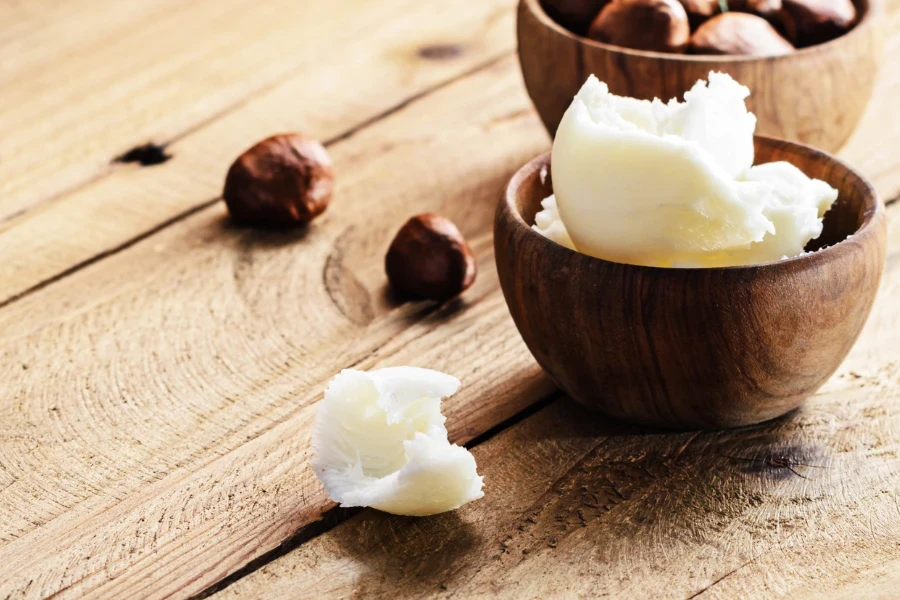
While shea butter is generally considered safe for most people, there are some potential side effects to be aware of. Individuals with tree nut allergies should exercise caution, as shea butter is derived from the nuts of the shea tree. Although allergic reactions to shea butter are rare due to the low protein content that typically triggers allergies, it is always recommended to perform a patch test before incorporating it into your beauty routine.
Overuse of shea butter, especially on the face, can lead to breakouts in some individuals, particularly those with very oily or sensitive skin. As with any new skincare product, it’s essential to start with a small amount and gradually increase usage as your skin adjusts. Additionally, using unrefined shea butter with impurities may increase the risk of irritation or allergic reactions, so opting for high-quality, pure shea butter is crucial for minimizing potential side effects.
How to use shea butter
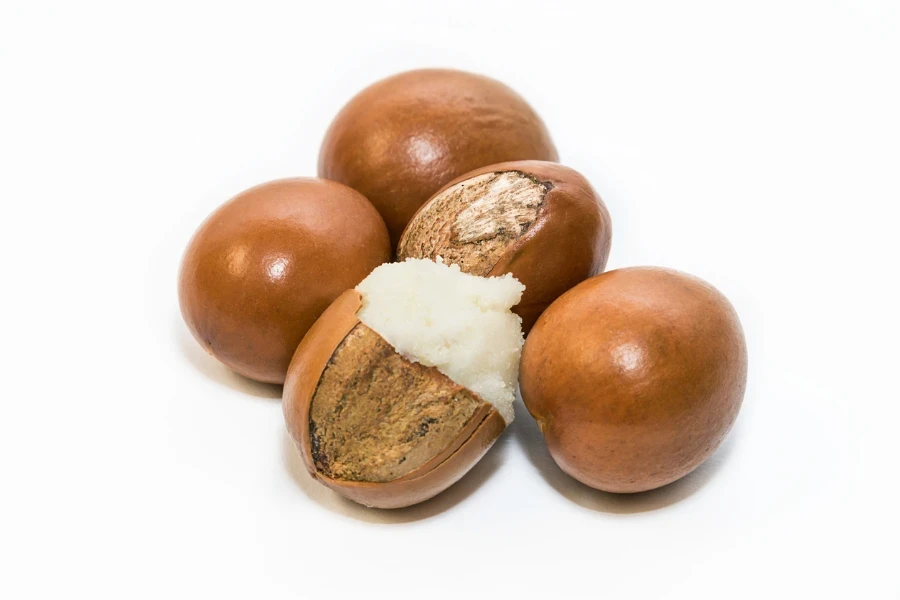
Incorporating shea butter into your beauty regimen is straightforward and versatile. For skin care, it can be applied directly to the skin as a moisturizer, targeting dry areas such as elbows, knees, and feet for intense hydration. Shea butter can also be used as a base for homemade body butters, lip balms, and salves, mixed with essential oils and other natural ingredients for added benefits.
For hair care, shea butter can be melted and applied to the hair and scalp as a deep conditioning treatment, left on for several hours or overnight before washing out. It can also be used as a styling aid to tame frizz and add shine to the hair. When using shea butter on the face, it’s important to use a small amount to avoid clogging pores, especially for those with oily or acne-prone skin.
Top trendy products that contain shea butter
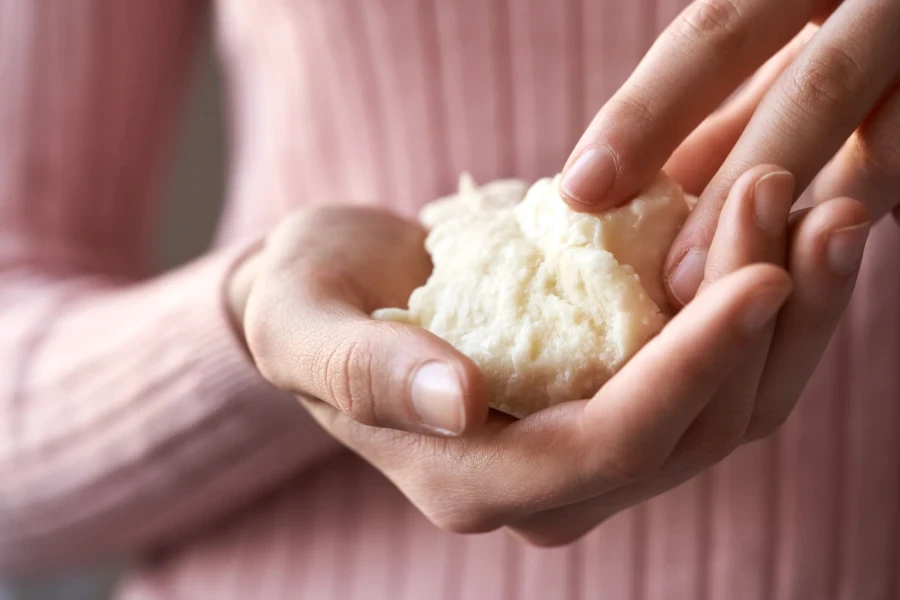
The popularity of shea butter in the beauty and personal care industry has led to its inclusion in a wide range of products, from high-end moisturizers and serums to affordable lip balms and body lotions. Some of the top trendy products that feature shea butter include hydrating face creams designed for nighttime use, providing deep moisture and anti-aging benefits while you sleep. Hair masks enriched with shea butter and other natural oils are also popular, offering intense nourishment and repair for damaged, dry hair.
Body butters and lotions containing shea butter are a staple for many, providing long-lasting hydration and a luxurious feel. Additionally, lip balms with shea butter have become a must-have for keeping lips soft, smooth, and hydrated, especially in harsh weather conditions. As consumers increasingly seek natural and effective ingredients in their beauty products, shea butter continues to be a key component in formulations designed to nourish, protect, and rejuvenate the skin and hair.
Conclusion:
Shea butter is a powerful natural ingredient that offers a multitude of benefits for the skin and hair. Its rich, nourishing properties make it an ideal choice for moisturizing, healing, and protecting, while its natural composition ensures it is gentle and suitable for most skin types. Whether used in its pure form or as a key ingredient in beauty products, shea butter is a versatile and effective addition to any personal care routine. With its proven effectiveness and wide range of applications, shea butter remains a beloved beauty secret for achieving radiant, healthy-looking skin and hair.




